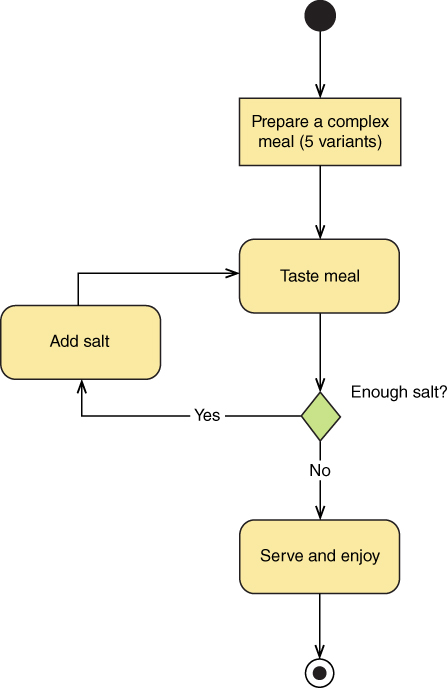6GOOD MBT MODELING PRACTICES
This chapter covers the learning objectives of syllabus Section 2.3 “Good Practices for MBT Modeling Activities.”
6.1 QUALITY CHARACTERISTICS FOR MBT MODELS
In model-based testing (MBT), obviously, errors in the models propagate into all generated artifacts. Figure 6.1 illustrates this effect. Did you find the mistake?

Figure 6.1 MBT model with obvious “bug” (semantic error in an activity diagram).
None of the five variants of the complex meal will be good. They are either completely salted or tasteless, just because we confounded “Yes” and “No” after the decision.
Therefore, it is important to verify your MBT models early, regularly, and thoroughly. We have to check, whether the model is formally correct, whether its content is valid, and whether it is suitable for the given test objective. Those three quality characteristics are also called syntactic, semantic, and pragmatic quality.
6.1.1 Syntactic Model Quality
Even without using strict Unified Modeling Language (UML), our MBT model has to obey to some modeling language. In addition, we discuss in Section 6.4, how important modeling guidelines are. Both the modeling language and our modeling guidelines define formal rules the MBT model has to follow. If it does not, we cannot be sure everybody understands it in the same way. In particular, the test case generator will run into errors, if ...
Get Model-Based Testing Essentials - Guide to the ISTQB Certified Model-Based Tester now with the O’Reilly learning platform.
O’Reilly members experience books, live events, courses curated by job role, and more from O’Reilly and nearly 200 top publishers.

